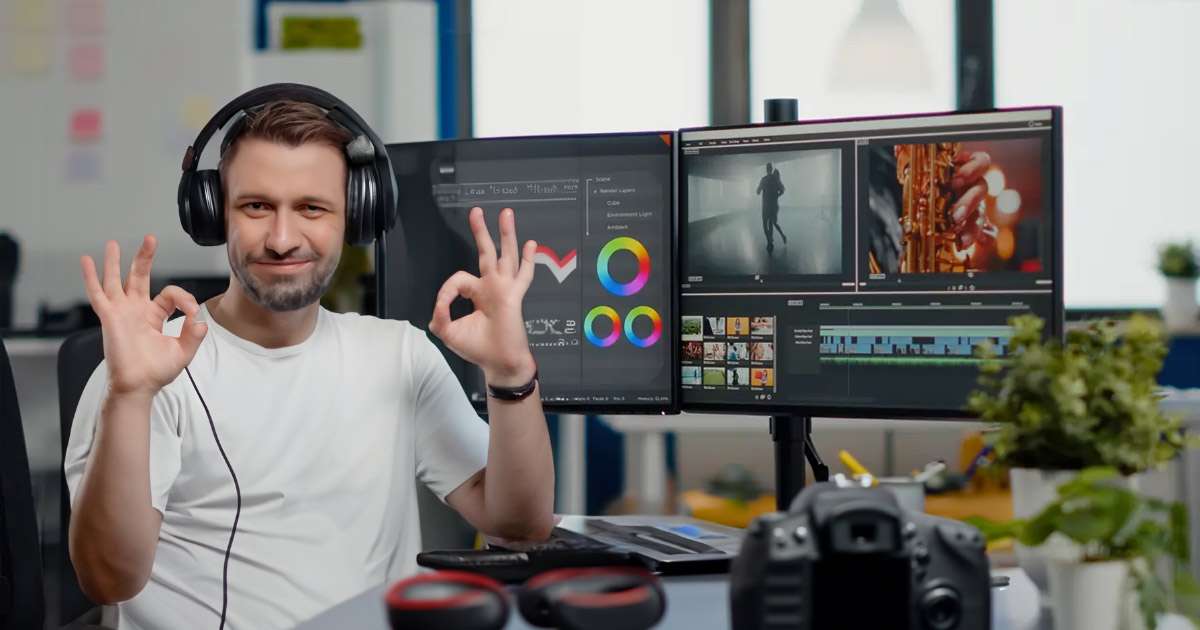Basic Video Editing Equipment for Newbies

Video editing is an exciting skill to master, whether you’re crafting YouTube videos, vlogs, or family memories. To get started on the right foot, having the appropriate video editing equipment for beginners is crucial.
What Equipment Do You Require for Video Editing?
When diving into video editing, having the right gear can make a significant difference in your workflow and the quality of your final product. Here’s a breakdown of essential equipment to consider:
- Camera: Start with a smartphone camera or a basic DSLR to capture high-quality footage. Smartphones like the iPhone or Android devices with good cameras are suitable for beginners. For more control over settings, consider entry-level DSLRs such as the Canon EOS Rebel series or Nikon D3000 series.
- Computer: Invest in a reliable computer with ample RAM and a fast processor to handle video editing tasks smoothly. Popular choices include:
- MacBook Air: Known for its portability and performance.
- Dell XPS series: Offers powerful processors and high-resolution displays suitable for video editing.
- Editing Software: Choose software with user-friendly interfaces and robust editing capabilities:
- Adobe Premiere Pro: Industry-standard software with advanced features for professional editing.
- Final Cut Pro X: Mac-exclusive software known for its intuitive interface and powerful editing tools.
- iMovie: Entry-level software for Mac users, ideal for basic editing tasks and learning the fundamentals.
- External Hard Drive: Store and back up large video files safely with reliable external hard drives:
- Western Digital My Passport: Compact and offers high-capacity storage options.
- Seagate Backup Plus Portable: Affordable and reliable for storing multimedia files.
- Microphone: Ensure clear audio quality with dedicated microphones suitable for video recording:
- Rode VideoMicro: Compact shotgun microphone ideal for capturing clear audio directly from the source.
- Audio-Technica ATR2100x-USB: Versatile microphone with both USB and XLR connections, suitable for recording voice overs and interviews.
What to Consider When Purchasing Video Editing Equipment
Choosing the right equipment involves several considerations to ensure compatibility and efficiency:
- Budget: Determine your budget allocation for each component, including cameras, computers, software, and peripherals. Research and compare prices to find the best value without compromising on quality.
- Compatibility: Ensure that all your equipment works seamlessly together. Check compatibility between cameras, computers, editing software, and peripherals like external hard drives and microphones. Compatibility issues can lead to workflow interruptions and additional costs.
- Portability: Consider the mobility of your setup based on your needs. If you travel frequently or work in different locations, opt for lightweight laptops or portable editing setups. Desktop setups may offer more power but are less convenient for on-the-go editing.
- Future-Proofing: Invest in equipment that can grow with your skills and needs. Choose models with upgradeable components such as RAM and storage. Consider investing in software subscriptions that provide regular updates and access to new features.
Video Editing Equipment Must-Haves for Every Level & Budget
Building your video editing setup can be tailored to fit various budgets and preferences. Here are some recommended options across different categories:
Computers: Computers are the backbone of any video editing setup. They need to be powerful enough to handle resource-intensive tasks such as rendering, exporting, and running complex editing software smoothly.
Storage Solutions: Video files can be extremely large, and having sufficient and reliable storage is crucial. External hard drives and SSDs (Solid State Drives) are commonly used for this purpose.
Peripherals: Peripherals are additional devices that enhance your video editing setup, providing greater control and efficiency. These devices can make your editing process smoother and more enjoyable.
Software: Editing software is essential for video production, as it provides the tools needed to cut, enhance, and finalize your videos.
Audio Equipment: High-quality audio is crucial for video production, as poor sound can detract from even the most visually stunning footage. Investing in good audio equipment ensures your videos have clear, professional-grade sound.
Ergonomic Furniture: Ergonomic furniture ensures comfort and helps prevent strain during long editing sessions. Investing in good ergonomic furniture can improve your productivity and well-being.
Tips on Making the Best Use of Your Video Editing Equipment
Once you have your equipment set up, optimize your editing process with these tips:
- Organize Your Files: Maintain a structured folder system for your footage, audio files, and project files. Use clear naming conventions and date-based folders to easily locate assets.
- Learn Keyboard Shortcuts: Familiarize yourself with essential keyboard shortcuts specific to your editing software (e.g., Adobe Premiere Pro, Final Cut Pro). Shortcuts can significantly speed up your editing workflow and improve efficiency.
- Regular Backups: Implement a robust backup strategy to safeguard your work. Use external hard drives, cloud storage solutions (e.g., Dropbox, Google Drive), or dedicated backup software to ensure your projects are protected from hardware failures or accidental deletions.
- Invest in Training: Expand your editing skills by investing time in online tutorials, courses, or workshops. Platforms like Udemy, Lynda.com (now LinkedIn Learning), and YouTube offer a wealth of resources tailored to beginners and advanced editors alike.
- Experiment and Have Fun: Don’t be afraid to experiment with different editing techniques, transitions, effects, and styles. This experimentation not only helps you discover your unique editing voice but also keeps your creativity flowing.
Enhance Your Video Editing Journey
Knowing what you need, setting a reasonable budget, and choosing equipment that fits your editing objectives are the three main components of a complete video editing setup for beginners. To make films that people can’t stop watching, you need to make sure you have the correct equipment and work on your abilities often.

